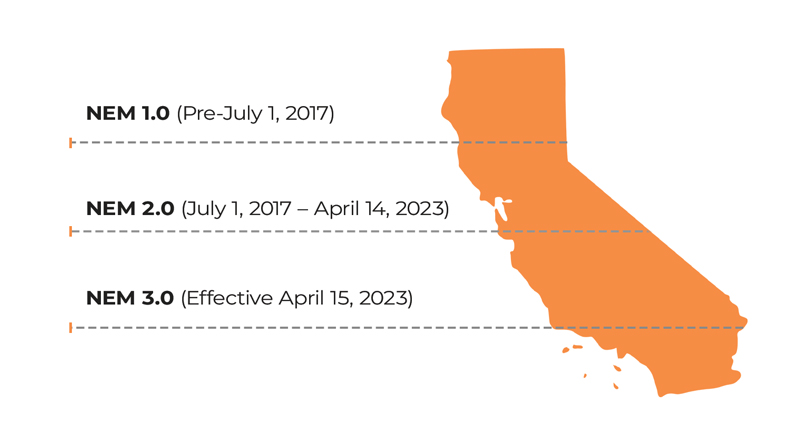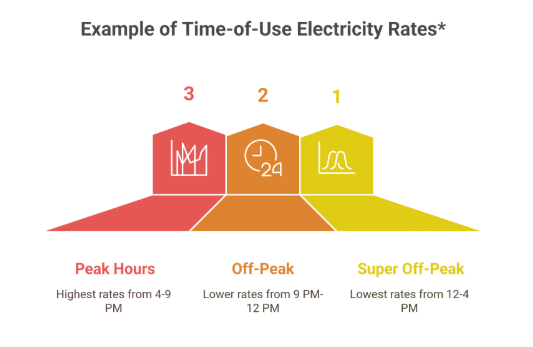Blog

“Wait, Where’s My Solar?”
So, you’ve gone solar. You made the investment, your solar panels are shining on the roof, and your monitoring app shows kilowatt-hours being produced like clockwork. Yet—your electric bill arrives and… it’s confusing, or worse, disappointing.
Where’s all the “Solar energy”?
The truth is, your electric bill only reflects part of your solar story. To truly understand the costs and credits post-solar, you need to dive into how your system interacts with the utility grid, your energy consumption habits, and—most importantly—your state’s net metering policy.
1. Solar Powers Your Home First
When the sun is up, your panels generate electricity that powers your home’s devices and appliances in real time.
2. Excess Energy: To the Grid or Your Battery
- Without Battery: Extra energy flows back to the utility grid.
- With Battery Storage: Extra energy is stored in the battery for later use—like at night or during a power outage.
This is where net metering comes into play.


Net metering is a billing system that allows you to earn credits for the excess electricity your solar panels generate and send to the grid.
Basic Concept:
- You get credited for every kWh you send to the grid.
- You pay for the energy you pull from the grid when solar isn’t available (nighttime, cloudy days).
- Your electric bill reflects the net difference:


California has been a solar leader—but policies have evolved over time:
🔹 NEM 1.0 (Pre-July 1, 2017)
- Full retail credit for excess solar.
- Minimal fees.
- Very solar-friendly for early adopters.
- Grandfathered for 20 years from installation.
🔹 NEM 2.0 (July 1, 2017 – April 14, 2023)
- Still offered retail rate credits, but added:
- Time-of-Use (TOU) rates: Electricity prices change based on the time of day.
- Interconnection fees.
- Non-bypassable charges for grid maintenance.
- Time-of-Use (TOU) rates: Electricity prices change based on the time of day.
🔹 NEM 3.0 (Effective April 15, 2023)
- Major shift: Introduced Net Billing.
- Exported energy is credited at avoided cost rates—a fraction of retail prices.
- Strong financial incentive to add battery storage to use your own energy.
- Homeowners without batteries earn significantly less for exported solar.
Source: California Public Utilities Commission – Net Billing Tariff (NEM 3.0)
California’s three major investor-owned utilities (IOUs) now operate under NEM 3.0, but your experience may vary slightly based on your utility provider:
🔸 PG&E (Pacific Gas & Electric)
- Time-of-Use plans are mandatory under NEM 2.0 and NEM 3.0.
- Export rates range between $0.05 – $0.08/kWh on average under NEM 3.0.
- Incentivizes battery pairing for optimal savings.
🔗 Learn more: PG&E Solar Billing
🔸 SCE (Southern California Edison)
- Similar time-based rates and export credit schedules.
- NEM 3.0 customers may benefit more from load shifting and energy storage.
🔗 Learn more: SCE NEM 3.0 Info
🔸 SDG&E (San Diego Gas & Electric)
- Implements some of the lowest avoided cost rates among IOUs.
- Credits for exported energy can drop below $0.05/kWh during midday.
🔗 Learn more: SDG&E Net Energy Metering
Your utility bill only shows grid interaction, not your total solar output. That’s because utilities don’t monitor what your panels produce—just the energy you:
- Pull from the grid
- Send back to the grid
To see total solar production, you need to check your solar monitoring app, such as:
- Tesla Solar App
- Enphase Enlighten
- Deposits = Energy sent to the grid or stored in your battery.
- Withdrawals = Energy pulled from the grid.
- Bill = The net balance of those transactions.
Think of your utility bill like a bank statement—it only shows what came in and out, not what you earned at your “job.”
Under NEM 2.0 and 3.0, your rate varies by time of day:

*Check your bill to see the exact hours and rates.
Tip: Use appliances during off-peak hours and store solar in your battery to use later during peak rates.
To get a clear view of your solar performance, use your app to monitor:
- Total solar production
- Real-time home usage
- Battery charging/discharging
Grid import/export
Policies vary widely across the U.S. For example:
- Florida: Maintains 1:1 net metering as of 2024.
- Arizona: Credits are based on avoided cost, similar to NEM 3.0.
- New York: Uses “Value of Distributed Energy Resources” (VDER) instead of traditional net metering.
🗺️ Find your state’s solar policies:
🔗 DSIREUSA – Database of State Incentives for Renewables & Efficiency
Understanding your solar electric bill starts with recognizing what your utility tracks—and what they don’t. With changes in net metering and varying credit rates, your solar journey is more than just panels on a roof. By using your monitoring tools, understanding time-based billing, and keeping up with state policies, you can take full control of your energy and savings.

